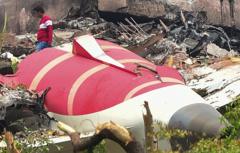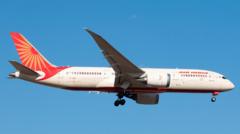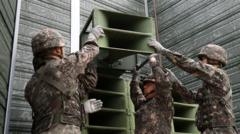The report uncovers systemic lapses in safety protocols at Muan International Airport, raising concerns about aviation safety practices.
**Warnings Ignored: The Tragic Jeju Air Flight 2216 and Bird Strikes**

**Warnings Ignored: The Tragic Jeju Air Flight 2216 and Bird Strikes**
Authorities failed to implement crucial bird strike prevention measures prior to a devastating crash, resulting in 179 fatalities.
The tragic December 2025 crash of Jeju Air Flight 2216, which resulted in the loss of 179 lives, has been attributed to alarming measures that were neglected to prevent bird strikes. Recent inquiries reveal that airport officials had received multiple warnings about the increasing incidents of bird strikes in the months leading to the disaster. Evidence indicates that little was done to mitigate these risks, further exacerbating an already precarious situation.
Just ten days prior to the fatal flight, a meeting took place at Muan International Airport where officials from various aviation bodies convened to discuss bird strike concerns. The data presented highlighted a worrying rise in bird collisions with aircraft. An official voiced the alarming situation, noting the frequency of bird encounters during landings, particularly along the coastal areas adjacent to the airport.
The response from airport management was far from reassuring. It was revealed that the resources dedicated to bird diversion were insufficient, with inadequate staff and vehicles assigned for the purpose. Additionally, efforts to use loudspeakers for scaring birds were ineffective, as these sounds did not reach the necessary distances to influence bird behavior.
The grim culmination of these shortcomings occurred on December 29, 2025, when the pilot of Jeju Air Flight 2216 declared a "Mayday" as the aircraft descended. Reports indicated that a bird strike had occurred moments before the plane attempted an emergency landing, resulting in a catastrophic crash that claimed 179 lives of the 181 individuals onboard.
Investigations into the crash have yet to reveal a definitive cause, although evidence suggests that bird remains were found inside the jet's engines, identified as belonging to the Baikal teal—a migratory bird known to frequently flock in significant numbers. This occurrence adds a troubling layer to the ongoing scrutiny surrounding Muan International Airport's failure to address bird hazards adequately, posing critical questions about the effectiveness of current aviation safety measures and protocols.
Just ten days prior to the fatal flight, a meeting took place at Muan International Airport where officials from various aviation bodies convened to discuss bird strike concerns. The data presented highlighted a worrying rise in bird collisions with aircraft. An official voiced the alarming situation, noting the frequency of bird encounters during landings, particularly along the coastal areas adjacent to the airport.
The response from airport management was far from reassuring. It was revealed that the resources dedicated to bird diversion were insufficient, with inadequate staff and vehicles assigned for the purpose. Additionally, efforts to use loudspeakers for scaring birds were ineffective, as these sounds did not reach the necessary distances to influence bird behavior.
The grim culmination of these shortcomings occurred on December 29, 2025, when the pilot of Jeju Air Flight 2216 declared a "Mayday" as the aircraft descended. Reports indicated that a bird strike had occurred moments before the plane attempted an emergency landing, resulting in a catastrophic crash that claimed 179 lives of the 181 individuals onboard.
Investigations into the crash have yet to reveal a definitive cause, although evidence suggests that bird remains were found inside the jet's engines, identified as belonging to the Baikal teal—a migratory bird known to frequently flock in significant numbers. This occurrence adds a troubling layer to the ongoing scrutiny surrounding Muan International Airport's failure to address bird hazards adequately, posing critical questions about the effectiveness of current aviation safety measures and protocols.






















